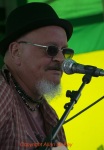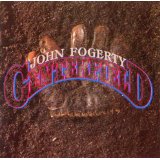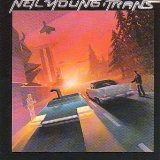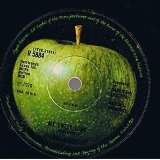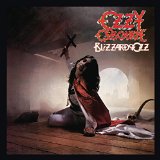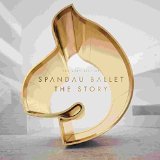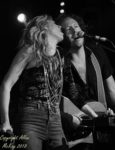 2018 has been a cracking year for gigs. I’ve been all over London and I’ve even managed to get to Staffordshire, Oxfordshire, Yorkshire and Brighton. I might have to do a count at the end of the year to work out how many different gigs and bands I’ve seen. I haven’t seen a bad gig, I’ve seen a lot of good ones and I’ve seen a few absolute belters. I’m guessing that those are the ones you want to hear about, yeah? As always, in no particular order.
2018 has been a cracking year for gigs. I’ve been all over London and I’ve even managed to get to Staffordshire, Oxfordshire, Yorkshire and Brighton. I might have to do a count at the end of the year to work out how many different gigs and bands I’ve seen. I haven’t seen a bad gig, I’ve seen a lot of good ones and I’ve seen a few absolute belters. I’m guessing that those are the ones you want to hear about, yeah? As always, in no particular order.
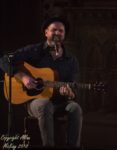 Martin Harley & Daniel Kimbro @The Union Chapel
Martin Harley & Daniel Kimbro @The Union Chapel
A year before this event, Martin told me after his gig at The Forge in Camden that he was booking The Union Chapel. He had no idea if he could fill the venue, or if he would break even on the event. At that time, I suspect I was more confident than Martin was. Anyway, fast forward a year to March 10th 2018 and a packed Union Chapel (almost sold out on pre-sales) saw finger-style guitarist Mike Dawes open for the dynamic duo. The intimacy of Martin and Daniel’s small venue performances scaled up perfectly for this particular venue. The combination of superb playing, perfect harmonies and the laconic interplay between songs was absolutely entrancing. Martin’s Weissenborn playing and Daniel’s virtuoso bass (I actually wanted to hear the bass solo) combined perfectly to create an almost Spectoresque wall of sound at times. And then the obligatory unplugged Union Chapel encore. Want a great Christmas gift? How about the live DVD?
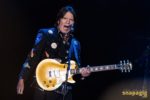
Photo courtesy of John Hayhurst.
John Fogerty and Steve Miller @The O2
I really loathe the O2. It’s impersonal and it’s ridiculously expensive; it’s everything that winds me up about the enornodromes. And, as the start of the evening proved, if the mix isn’t spot-on it can sound awful in the auditorium, which it did for most of Steve Miller’s set. Which was a shame because the last half-dozen songs, when the mix was finally right, sounded superb.
But the reason for my tolerance of this corporate barn was John Fogerty. I’ve been a fan of his work since I was a teenager, progressing from Creedence Clearwater Revival to the solo material. He has a phenomenal back catalogue of classic songs, most of which were dusted off for this gig. When you can open your set with “Travelin’ Band”, you can’t go too far wrong. The band was absolutely stunning; all superb musicians, with keyboard maestro Bob Malone dashing around the stage between blasts of piano and Hammond. The greatest hits all got their airing (including the one we know better from Live Aid and Quo, “Rocking All Over the World”, which he only plays in Europe) but, in a little tribute to New Orleans, we got covers of “Don’t Mess With my Toot Toot” and the Gary Bonds song “New Orleans”. Just phenomenal. Read what Steve J thought about it here.
 Albert Lee & Peter Asher @Cornbury Festival
Albert Lee & Peter Asher @Cornbury Festival
For various reasons, Cornbury was the only festival I did this year. It was a bit of a mixed bag on the main stage, but the bill on the second stage across the weekend was eclectic and classic. The one performance I didn’t want to miss was Albert Lee & Peter Asher in the Caffe Nero tent on Saturday evening. I wasn’t disappointed; the songs were delivered in an Everly Brothers style (well, Albert did play in their band) and were interspersed with anecdotes about songwriting greats in the 60s and 70s on both sides of the Atlantic. It was all very laid back but the quality of the playing and the harmonies was absolutely superb. I’m a big fan of the duo format and this was the ‘two voices, two instruments’ at its absolute best. The tent was packed throughout the set and the entire audience left with a warm glow.
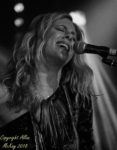 Belle Roscoe & Lisa Canny @26 Leake Street
Belle Roscoe & Lisa Canny @26 Leake Street
This was the first night of live music at a new venue and it introduced me to not one but two new artists.
Belle Roscoe are brother and sister Matty and Julia Gurry. They play gigs in the duo format, but also have a band for bigger gigs (like this one). The songs are strong, the harmonies are great and the arrangements, with Matty’s guitar and Julia’s floor tom and keyboard playing augmented by bass, drums and guitar are powerfully percussive. It’s a big sound and it completely won over a crowd who were mainly there for the occasion, and not necessarily the music. And that was just the start of the night; there was still Lisa Canny to come.
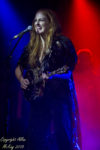 Lisa also adapts her live arrangements according to the size of the venue. She’s perfectly happy with just the harp and banjo, but this was also a full band set. Lisa’s originally from Cork and a traditional Irish music background; that background is part of what she’s about now, but there’s a lot more. She blends Celtic influences with pop and rap to create a totally infectious mix that’s unlike anything I’ve ever heard before. I’m not exaggerating when I say that at times most of the audience was absolutely stunned by what they were seeing and hearing. And then the finale; Lisa playing a projected laser harp (honest, and I was stone-cold sober). A bit of a night.
Lisa also adapts her live arrangements according to the size of the venue. She’s perfectly happy with just the harp and banjo, but this was also a full band set. Lisa’s originally from Cork and a traditional Irish music background; that background is part of what she’s about now, but there’s a lot more. She blends Celtic influences with pop and rap to create a totally infectious mix that’s unlike anything I’ve ever heard before. I’m not exaggerating when I say that at times most of the audience was absolutely stunned by what they were seeing and hearing. And then the finale; Lisa playing a projected laser harp (honest, and I was stone-cold sober). A bit of a night.
Skatalites & The Majestic & Nell’s Jazz & Blues
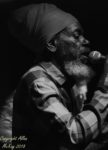 Another night out with Steve J and Mrs J in a slightly smaller venue. Nell’s is renowned for its intimate atmosphere, with a cabaret layout and a very chilled vibe. I hadn’t heard The Majestic before and I loved the band; proper roots reggae. They’ve been around for years doing their thing around West London and they’re such a powerful reggae unit. It’s not about individuals, it’s about everyone playing their part to create a slinky, sinuous groove. I hear a band like this and I can’t understand why there are people who say they don’t get reggae.
Another night out with Steve J and Mrs J in a slightly smaller venue. Nell’s is renowned for its intimate atmosphere, with a cabaret layout and a very chilled vibe. I hadn’t heard The Majestic before and I loved the band; proper roots reggae. They’ve been around for years doing their thing around West London and they’re such a powerful reggae unit. It’s not about individuals, it’s about everyone playing their part to create a slinky, sinuous groove. I hear a band like this and I can’t understand why there are people who say they don’t get reggae.
 I didn’t know what to expect from Skatalites, apart from the obvious “Guns of Navarone”. The membership may not be the originals, but most of these guys have been in the band for decades. They’re tight and punchy with the classic tenor sax, trumpet and trombone horn section. It’s a pleasure to hear guys who are this good just doing their thing; but that’s not all. Part way through the set they were joined by the phenomenal ‘Queen of Ska’, Doreen Schaffer. She’s looking a little fragile now, but the voice is still there and the audience loved it. I think I had something in my eye at one point.
I didn’t know what to expect from Skatalites, apart from the obvious “Guns of Navarone”. The membership may not be the originals, but most of these guys have been in the band for decades. They’re tight and punchy with the classic tenor sax, trumpet and trombone horn section. It’s a pleasure to hear guys who are this good just doing their thing; but that’s not all. Part way through the set they were joined by the phenomenal ‘Queen of Ska’, Doreen Schaffer. She’s looking a little fragile now, but the voice is still there and the audience loved it. I think I had something in my eye at one point.
It was a taste of carnival at the end of October.
 So, meanwhile, I’m still thinking…..I’d spent a chunk of the last week reporting on the Leek Blues and Americana Festival and with the book coming out and everything, I was feeling a bit knackered so a bit of a break in Norfolk seemed just the very thing before covering Creedence Clearwater Revival’s original main man John Fogerty and The Steve Miller Band amongst others for MusicRiot.
So, meanwhile, I’m still thinking…..I’d spent a chunk of the last week reporting on the Leek Blues and Americana Festival and with the book coming out and everything, I was feeling a bit knackered so a bit of a break in Norfolk seemed just the very thing before covering Creedence Clearwater Revival’s original main man John Fogerty and The Steve Miller Band amongst others for MusicRiot.
The North Norfolk coast is a very quiet part of the country, though, and something interesting on a Saturday night isn’t normally part of the masterplan and to be honest, I really wasn’t looking for anything which would lead me to flex the writing muscles.
All I want is Easy Action, Baby.
So when we discovered T. Rextasy was playing, literally, an ‘end of the pier’ show in Cromer Pier Theatre that very evening, we couldn’t resist very late seats in what was an ostensibly sold-out house.
However.
It is the best part of twenty years since I interviewed main man Danielz on Newark FM, when he was playing the festival in front of the splendid castle there; how has he managed to carry the live legacy of Bolan through to Now?
Because way, way back then, he was already regarded as having transcended the medium of ‘tribute’ acts. And since then, there has been a positive tsunami of these, some of which play your local pub on ‘band’ night on a wet Wednesday on the strength of the front man bearing a slight resemblance to whoever of whatever, some of whom work at it, get professional representation and marketing behind them, and find themselves treading the boards alongside the Last Men and Women Standing in provincial theatres or as part of ‘jukebox musicals’; the ‘whoever’ story, insert name here. In some cases the ‘originals’ are still alive, and in some cases still turn out for the occasional tour, which makes it all a question of scale, affordability and access. Very strange.
No such problems with Marc Bolan’s legacy. It was all over for the poor bloke by the end of 1977; and he’d been drifting, well off the pace, for a number of years before that. He’d been ‘rumbled’ by then, the ‘cosmic boogie’ card had been heavily played, and he was busily trying to find a way forward in the face of punk, the stellar progress of his old mate Bowie, and the debilitating effects of long-term enthusiasm for the Peruvian Marching Powder.
And during his life, he really didn’t ‘tour’ extensively. After the rash of festivals played with the folksy, Tolkienesque Tyrannosaurus Rex, many of his ‘live’ performances were glammed-up set pieces on Top Of The Pops and the such like. So, it isn’t ridiculous to suggest he really didn’t understand, appreciate or value the power of his songs as live show-stoppers.
Danielz, however, in the years between when I interviewed him for radio (and he’d already been doing this for a while before then) and now, has had more than twice as long as Bolan had to ‘grow into’ the T. Rex repertoire. So, it isn’t ridiculous or sacrilegious to suggest that Danielz probably has a greater understanding of how the songs work in a live setting than Marc Bolan ever had.
And it shows. The luxury of time passing also gives him the opportunity to take risks with the songbook as well, as a younger generation of fans along with the ‘old guard’ don’t necessarily know the difference between some of the minor hits and the ‘B’ sides, hence kicking off the set with “Raw Ramp”, an early 70’s B-side. There’s brave, but the band attacks it with plenty of zip and It Works. Indeed, the whole band are a crisp, disciplined and well-drilled unit, which shows all the hallmarks of hard gigging and professional musicianship, which sadly wasn’t a charge which could be laid at Bolan’s door throughout his career. The biggies are saved largely for the second set, and the middle section of the ‘first half’ is given over to a very enjoyable acoustic section which draws in some Bolan rarities; which makes the decision to do an electric boogie-woogie version of ‘Deborah’ seem a slightly strange one.
The first part of the evening’s entertainment is concluded on a high with a spirited dash through “Jeepster” – one of Bolan’s recordings for Fly Records which are generally regarded as his best; and hearing it live again throws all sorts of light onto it as a song; and for all the world the bones of it seem to have country roots. The bass line which underpins it could easily have been part of a ‘Western Swing’ tune from the late 40’s and early 50’s. Bolan gave us plenty of clues to this – and in the live context presented so expertly and affectionately by T. Rextasy, these become clearer and more visible/audible. In “Telegram Sam”, for example he’s a Howlin’ Wolf at the end, and indeed he is. And a cosmic Bo Diddley, John Lee Hooker, insert name here. We Love To Boogie.
I can’t help feeling it was rather sad, watching Bolan, as I did, slowly lose his grip on the cutting edge, whilst desperately trying to hang on to it, seemingly only ending up with badly injured fingers. He desperately and at times embarrassingly tried to embrace punk and the songs from this period show someone who was trying to tap into the energy but had seriously lost his way; which is more the pity given he had already written and recorded a proto-punk anthem in “Solid Gold – Easy Action”, which Danielz and Co thrash through at the speed and urgency it calls for in order for it to work
Predictably and entirely reasonably towards the end of the band’s set, three big shots in “Ride A White Swan”, “Get It On” and for the encore, “Hot Love” and indeed why not? However it is in these more than any other we see the slight ‘morphing’ of these tunes into the live crowd-pleasers they always potentially could have been; for me, the slightly ‘dirty’ guitar sound doesn’t help the first of these as the bright, spangly guitar on it is what makes it stand out; but a rockier and more ‘stadium’ “Get It On” really helps it to live in a more ‘real’ context than a slightly ‘cut and stick’ studio confection; and “Hot Love” gives a whole load of opportunities for a joyful audience singalong which becomes the celebration of a classic body of work it should be. All interspersed with affectionate, cheeky asides to the audience between songs, some of which showing the ‘beyond the call of duty’ respect Danielz enjoyed from members of Bolan’s family and indeed the larger musical family to which we all claim a degree of patronage. If he is to be believed (and having spoken to him I see no reason why he shouldn’t be) in the final years of his life, the only musos of the period Joey Ramone would call were Tony Visconti, Suzi Quatro, Noddy Holder and Danielz. Well, that kind of tells you something in terms of what Danielz has achieved here. What is also interesting for me is to watch Danielz so many years after first clocking his act all those years ago; he really has matured as a performer. He knows how to ‘work’ a crowd alright. Most of the members of the audience were out of their seats for more than half the set and with an audience largely of mature years, that, in itself, is not easy. And meanwhile, I’m still thinking; I wonder if Bolan would have managed the same given the same longevity? Because one thing you can say with absolute certainty is Danielz is a grafter; this act needs work; it needs to be rehearsed, over and over and over, especially in order to develop the flexibility of ‘oh, ok, we’ll play this now’, which the band does seemingly effortlessly. Which takes a lot of effort. Would Bolan have put this level of effort into ‘being’ Bolan? Conjecture.
So, have I ‘lost the plot’ reviewing a tribute act? Or has Danielz, along with the rest of T. Rextasy, escaped from ‘Tributeland’ and become part entertainer, part curator, part terrestrial interpreter for a mercurial talent who won the battle to reap the initial rewards – he drove a Rolls Royce ‘cos it was good for his voice – but wasn’t around long enough to win the war; respect, enormous back catalogue sales and becoming a live draw of preposterous proportions. Would any of this have happened or would he have been playing the equivalent of the end of the pier show?
I suspect the former rather than the latter. But in order to make an informed decision about that, I would strongly advise an evening or a bit a festy in the company of T. Rextasy. And I’m unlikely to say that about Fake Prat or whoever, so don’t get used to it. And meanwhile, I’m still thinking….
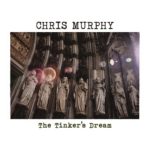 If I’m honest, I probably wouldn’t have sought out this album, but there’s a perverse enjoyment in stepping out of your comfort zone and finding out that the world hasn’t ended. The press release didn’t help by referring to Chris’s work as a revival of traditional fiddle music; it’s not so much a revival as someone carrying the torch to pass it on to the next runner. What Chris does, with style and impeccable technique is to create original tunes and songs based on (mainly) British and Irish folk styles with the occasional modern twist. He does a lot of it as well; this is his second album in three months. It’s music that’s created to make people dance, but the sheer quality of the playing and the strength of the melodies means that you don’t have to be whirling around a barn to feel its power. Be warned; it will make you tap your toes, at the very least.
If I’m honest, I probably wouldn’t have sought out this album, but there’s a perverse enjoyment in stepping out of your comfort zone and finding out that the world hasn’t ended. The press release didn’t help by referring to Chris’s work as a revival of traditional fiddle music; it’s not so much a revival as someone carrying the torch to pass it on to the next runner. What Chris does, with style and impeccable technique is to create original tunes and songs based on (mainly) British and Irish folk styles with the occasional modern twist. He does a lot of it as well; this is his second album in three months. It’s music that’s created to make people dance, but the sheer quality of the playing and the strength of the melodies means that you don’t have to be whirling around a barn to feel its power. Be warned; it will make you tap your toes, at the very least.
The sleeve notes very helpfully identify the various dance forms each tune’s associated with so you can give yourself a little online lesson in Gaelic music (I did and I know the difference now between jigs, reels and hornpipes – I managed to work out the waltz for myself) while appreciating some truly outstanding ensemble playing featuring fiddle, mandolin, guitar, bodhran, flute, penny whistle and uilleann pipes. The three vocal pieces on the album are a pretty accurate summary of what this album is all about; “Wicklow” and “Cape Horn” have pastoral Irish and seafaring lyrical themes that are straight out of the folk tradition, while “Small Wonder” retains the traditional stylings with modern lyrical references. “Cape Horn” is a great example of the of the influence of Celtic music on modern styles; you can hear similarities to John Fogerty’s “Lookin’ Out My Back Door”, which was in turn influenced by traditional Celtic-infused early American music. There’s also a very slight nod to Chris’s Irish heritage with the beautiful lament “Gibraltar 1988”; if you don’t get the reference, just stick the title in a search engine.
This album is a fascinating combination of the traditional and the modern, with Chris Murphy’s fiddle taking centre stage as the ensemble creates a backdrop with their intricate melodic patterns. I might not be dancing, but I’m certainly listening.
“The Tinker’s Dream” is released in the UK on Teahouse Records (THR003) on Friday January 27th.
 Now I’ve seen the Billy Walton Band in a variety of venues including village halls, rugby clubs and even the occasional music venue, but this was a first; BWB playing in a golf club in north London. First impressions were that, well, it was a golf club lounge with a temporary stage at one end and a bit of dance floor in front of it. None of that was going to put me off, because the venue’s almost irrelevant; these guys create their own live music bubble in any room they play.
Now I’ve seen the Billy Walton Band in a variety of venues including village halls, rugby clubs and even the occasional music venue, but this was a first; BWB playing in a golf club in north London. First impressions were that, well, it was a golf club lounge with a temporary stage at one end and a bit of dance floor in front of it. None of that was going to put me off, because the venue’s almost irrelevant; these guys create their own live music bubble in any room they play.
I think the band needs a name change as well; maybe the Ever-Expanding Billy Walton Band would work. The first time I saw the band (almost six years ago) they were a power trio – Billy, William Paris and drummer John Hummel. Since then, the brilliant John D’Angelo has taken over as the pulse behind the band and, after a brief spell with Richie Taz playing tenor sax, a horn section evolved adding tenor sax and trombone to the mix. The current BWB horn players are Tom Petracarro (sax) and Matt (Fish) Fisher (trombone); they add a huge soulful punch to the mix and they’re a whole bunch of fun as well. As of last year, Stateside keyboard collaborator Sam Sherman completed the six-piece line-up that is the current touring Billy Walton Band.
So, back to Barnet. From the moment the band hit the stage, the audience was with them, waiting for the magic to begin. The impact of the augmented line-up is obvious from the start; as a three-piece, every fill and solo was Billy’s responsibility but now it’s spread out over another three players. There was a perfect demonstration of the power this adds to the band during their cover of the Creedence song “Green River” (and where did that come from?), where the horns reinforced the guitar riff to create a punch that John Fogerty would be proud of.
There’s another way that the band have moved on since 2010; the songs from the last two albums are much more commercial and the part of the audience that isn’t worshipping the phenomenal guitar playing can appreciate the quality of the newer songs, particularly “Till Tomorrow”, with its insanely catchy hook. You expect great guitar solos, but the horns and keys are featured as well, creating a bit of breathing space and a perfect setting for Billy’s phenomenal playing. The song “Hot Blues” normally features Billy’s guitar mash-up of various recognisable riffs (and maybe a quick burst of vocals) from various classic rock tunes, but it was extended even further in Barnet because of the Grim Reaper’s hyperactive January. The solo featured quick tributes to Bowie (“Ziggy Stardust”), Glenn Frey (“Life in the Fast Lane”) and Buffin (“All the Young Dudes”) as well as “Kashmir” and the usual suspects.
I’m crossing my fingers here, but Billy seems to have hit on the line-up and the format to display his talents and appeal to a wider audience. There’s a perfect balance between strong songs, guitar virtuosity and the good time bar band playing soul, blues and rock that should push them up to the next level; I really hope it does.
It’s time to move away from albums, gigs and photos for a while and take a look at some of the music-themed books that have kept me sane on buses, trains and planes during 2015. By sheer chance, I’ve managed to pick out quite a nice variety of styles and themes, so the selection staggers from light-hearted memoirs through serious autobiography to high technology and serious crime (no, I don’t mean the new Coldplay album). So, as ever, in no particular order, here we go.
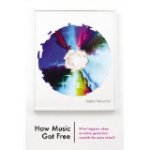 “How Music Got Free” – Stephen Witt
“How Music Got Free” – Stephen Witt
There’s a myth that’s been perpetuated about the origins of the current situation where we have a generation that won’t pay for music and a generation that doesn’t even recognise the concept of paying for music. What Stephen Witt’s book achieves is a comprehensive demolition of the myth that file-sharing came about because of some sort of people’s revolution where millions of like-minded people decided to share their digital music collections. This well-researched work picks out the various converging paths ultimately leading to the digital devaluation of music. The book explores the bureaucracy that bedevilled the adoption of a standard compression algorithm, the greed of the major music labels as they rushed into the highly lucrative CD market, the failure of the majors to react to the phenomenon of file compression (and increasing online transfer speeds which made sharing a viable proposition) and the outright criminality involved in stealing and counterfeiting masters from CD pressing plants. It’s a fascinating but ultimately depressing book.
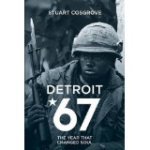 “Detroit 67: The Year that Changed Soul” – Stuart Cosgrove
“Detroit 67: The Year that Changed Soul” – Stuart Cosgrove
Stuart Cosgrove has picked out a pivotal year in the history of Motown and imposed a structure of a chapter per month (it works pretty well) which sets the upheavals at Motown against a backdrop of riots in Detriot, unrest in the police force and a general national malaise. Berry Gordy plays a central role in the well-known story of Diana Ross’s advancement at the expense of the other Supremes (and the expulsion of Florence Ballard), but Stuart Cosgrove delves deeper into the sickness at the heart of the company, dealing with the unease of major artists and the ultimate defection of the Holland/Dozier/Holland writing/production team. The book goes far beyond music biography by showing these events in the context of a city in meltdown with riots on either side of the racial divide and a brutal, corrupt police force fanning the flames. It’s a fascinating read, although there are far too many typos in the Kindle edition.
 “Fortunate Son” – John Fogerty
“Fortunate Son” – John Fogerty
Confession time: the first song I performed in public was Creedence’s “Up Around the Bend” in a school band which included some good musicians and a future nuclear physicist, and me. I was a fan from an early age. “Fortunate Son” is John Fogerty’s attempt to put the record straight after accusations and counter-accusations, suits and counter-suits with his former band members Doug Clifford and Stu Cook. The book is unflinchingly honest throughout; John Fogerty isn’t trying a whitewash here. He owns up to his mistakes and errors of judgement and this gives him the right to expose others’ lies and hypocrisy. It’s difficult not to empathise with him in his battles with Saul Zaentz and the former Creedence members: he wrote the songs, after all. “Fortunate Son” pivots around John Fogerty’s meeting with his second wife, Julie, who brought order to his chaotic life and pushed him back towards popular and critical recognition. It’s good, it’s honest, it’s straightforward and it’s delivered in an authentic John Fogerty voice.
 “Unfaithful Music and Disappearing Ink” – Elvis Costello
“Unfaithful Music and Disappearing Ink” – Elvis Costello
Declan McManus has an awful lot of stories to tell and, not surprisingly, he has a gift for writing and storytelling. “Unfaithful Music…” is a cracking read, giving an insight into the creation of some wonderful music, and life in the music business bubble. The book doesn’t follow a straightforward chronological structure; it’s much more like a conversation in the pub with each observation triggering another digression. There are some difficult events to deal with (the Stephen Stills/Ray Charles incident for example) and they’re all dealt with in a very matter of fact way. The book skips over some big chunks of Elvis Costello’s life, but the ones he does tackle are done with honesty and candour. The names that crop up as the story unfolds are a history of popular music, but this never feels like name-dropping, they’re just people who happen to have been around at certain times. This is a wonderful book.
“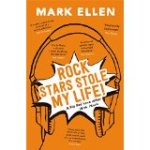 Rock Stars Stole My Life” – Mark Ellen
Rock Stars Stole My Life” – Mark Ellen
Mark Ellen’s memoir is a breezy and self-deprecating run through a life as a pop journalist, radio presenter, TV presenter and publisher. He gives an inside view on life at the NME in the seventies, The Old Grey Whistle Test and the Live Aid broadcast, all delivered in a jaunty style that’s very easy to read. He’s met and worked with some amazing people (again, it’s all matter-of-fact rather than name-dropping), but being a member of Ugly Rumours with Tony Blair takes some beating. Most of the book is fairly gentle humour, smiles rather than guffaws, but Mark Ellen saved the best for last. His account of the mayhem aboard Rihanna’s ill-conceived and farcical round-the-world-in-seven-days tour made me laugh out loud. The entire book’s funny, but this piece was hilarious.
If you don’t see anything you fancy there, Chrissie Hynde’s “Reckless” and Bob Harris’s “Still Whispering After All These Years” are both well-written and interesting biographies.
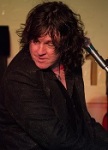 We’re big fans of Bob Malone here at MusicRiot so when I got the chance to meet up for a chat on the final night of his UK tour it was a bit of a no-brainer. Bob’s been in the UK for three weeks touring in support of his “Mojo Deluxe” album and the “Mojo Live” DVD and The 100 Club gig was the climax of a hectic tour schedule. So a very noisy 100 Club dressing room is where we got the chance to talk about old pianos, New Orleans and Southside Johnny, among other things:
We’re big fans of Bob Malone here at MusicRiot so when I got the chance to meet up for a chat on the final night of his UK tour it was a bit of a no-brainer. Bob’s been in the UK for three weeks touring in support of his “Mojo Deluxe” album and the “Mojo Live” DVD and The 100 Club gig was the climax of a hectic tour schedule. So a very noisy 100 Club dressing room is where we got the chance to talk about old pianos, New Orleans and Southside Johnny, among other things:
Allan – So it’s approaching the end of the tour and we met on the first night in Southend. How has it been since then?
Bob – It’s been great; a few funky gigs, a few spectacular gigs and we’ve worked hard. We had a couple of nights where we didn’t have gigs but we still had a radio show or a long drive; we’re a hard-working group.
Allan –Have you had any particularly good gigs?
Bob – This one’s definitely gonna be a good one and Keighley Blues Club, that was a really great crowd and Scotland as well, and we also played on the Isle of Wight.
Allan – I remember when we met in Southend you were talking about Italian audiences.
Bob – They’re full on, right out of the box, from the first song.
Allan –Do you notice any differences in the audiences around the UK?
Bob – Well it sometimes takes three or four songs here. The north is different from the south, as you know. I didn’t until I did these long tours here; England was just England like people think America is just America but here it’s five different countries with completely different cultures.
Allan – Have you played The 100 Club before?
Bob – No, but its reputation precedes…
Allan – How does that feel?
Bob – It feels good. I was soundchecking with the grand piano earlier and the sound engineer had footage of Paul McCartney playing that same piano.
Allan – I think it’s great to see it with the lights up and look at all those great photos around the walls of the people that have played here in the past.
Bob – I love places with history like this; you feel like you’re part of a continuum.
Allan – You’re promoting the Mojo Deluxe album at the moment. What kind of a reception has the album had?
Bob – I think it’s the most press and radio I’ve had on anything I’ve done and it’s my twentieth year of making records, so I’m happy with that.
Allan – After doing what I think of as the day job with John Fogerty, how does this compare? It must be a huge culture change.
Bob – It’s different. I’ve been doing this for twenty-five years; this is what I do, and I’ve been playing with John for almost five years now. With this, so long as the sound man is competent I’m happy. Everyone thinks it must be weird to go from small crowds to big crowds, but it really isn’t. As long as it’s a good musical experience and you’re connecting with an audience; that’s why we play. You can’t really control the size of the crowd and also when I do this it’s a mission; when I play with John it’s his gig. I’m lucky to be there but it’s his gig. I get my solo but other than that, it’s all about him and I’m just in the background.
Allan – Trying to avoid the pyrotechnics…
Bob – Trying not to burst into flames during “Fortunate Son”, exactly.
Allan – So when you’re out doing your own stuff, here and in the States, what would be your ideal band line-up?
Bob – The ultimate, when I’m not touring; when I’m LA, and I don’t have to put people in hotel rooms would be a nine-piece band. I just did a DVD, which I did the way I would like to do it and I had three female background singers, percussionist, drums, bass and guitar. I do a lot of stuff with horns as well, for years I had a horn section, so it would be a nine to eleven piece band and a second keyboard player would be great, to play the organ parts. (If you’re really paying attention, you’ll notice that the total number of musicians is only eight, but there’s a slide guitar player on there as well. I hope your heart isn’t broken by that omission Marty Rifkin.)
Allan – On your own tours, particularly in the UK, you rely on the venue providing the piano. Have you had any horror stories with that in the past?
Bob – Well, usually I carry a digital piano for when there’s no real alternative, but most of the places I play now, if there is a real piano, it’s usually in good shape, but I’ve been to places that had a hundred year old upright and some of the keys didn’t work but I kind of like to play those anyway, just for the challenge. It’s like going in the ring with this old piano and fighting it to see who wins. I love real pianos because they all have personality; the digital ones are handy and they’re light and they don’t go out of tune, but they don’t have much of a personality. They get the job done.
The one in Southend, that’s got some issues. It’s got some broken strings; it’s one that I fight to the death but I like playing it because it’s an old Bösendorfer.
Allan – I did notice a few problems at the soundcheck that night…
Bob – It needs a rebuild, but still I’m glad to see it.
Allan – You’re classically and jazz trained; was there any one thing that turned you into a rock/blues pianist?
Bob – The rock thing came first. One of those things was hearing “Sergeant Pepper” for the first time, so it’s you guys, it’s your fault. Then I heard Billy Joel and Elton John and not very long after that the New Orleans thing, which blew me away, and then Ray Charles and I became a huge student of that stuff but the rock stuff was always there.
Allan – Were you singing right from the start?
Bob – I started singing when I was fifteen probably. I started singing because I wanted to impress a girl I had a crush on. I just played classical piano but “Your Song” by Elton John was the first thing I ever sang in public; I thought ‘She’ll love me if I sing this song’. I was a terrible singer, some people still say I am, but I learned to work with what I have.
You write songs and there are obviously lots of people with better voices than me but when you write songs you have a story to tell and people always respond to the story and sometimes you’re the only person that can tell it.
Allan – We’ve had “Mojo Deluxe” this year, so what’s next on the agenda.
Bob – Well, I’ve got this DVD coming out and the audio from that was so good, we’re thinking of putting that out as a live record next year and I’ll make another new record, so I’ll probably get the live one out next year and in 2017 I’ll have a new studio album. I’ve got to get realistic about this; I’ve got about half the songs I need for another record.
Allan – I interviewed Southside Johnny in July 2014 in London…
Bob – Southside Johnny was also one of the big things in my youth and I should mention this because growing up in New Jersey, we all knew Southside Johnny. This was the 80s and you couldn’t hear that kind of music on the radio at all and so my first real exposure to r’n’b, blues, horn section kinda music was Southside and I learned from that and went back and figured out all the other stuff. He was huge for me.
Allan – When I interviewed him at Shepherds Bush Empire last July, we spoke about his new album “Soultime!” and he said they were aiming to get it out for Christmas 2014 and that finally came out in August this year.
Bob – Yeah, that’s about right. I toured here last year and I had half of “Mojo Deluxe” out as “Mojo EP”. We had finished recording and it was half-mixed and there were some problems and we couldn’t get the other half mixed in time and the promoter said ‘The whole thing is you have a record out for this tour; we can’t get any press without a record’ so we had half a record out as an EP, just in the UK for the tour.
Allan – And that worked really well as a sampler for the album.
Bob – And by the end of last year the whole thing was done but then we needed a three month ramp for the release date to get it publicised and I was touring through the spring, so we just put the whole thing off and it came out almost a year later. That’s how it works. There are so many factors; if you have a lot of money involved, you can get things done a lot quicker. On a limited budget, you still need time to publicise, so you often end up delaying.
Allan – One final question; do you have one song that tears you up and gets you really emotional?
Bob – Yeah, “One for my Baby”, the Sinatra song; that one kills me every time. It depends on the day; it could be something else on another day.
Allan – Thanks very much, Bob.
And there you go; a private audience with the great Bob Malone, who was as entertaining offstage as on. Since we spoke, I’ve had a chance to watch the “Mojo Live” DVD and it’s superb, capturing the magic of a one-off performance absolutely perfectly. It has great performances from all of the musicians and it’s a whole load of fun; keep an eye out for it.
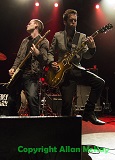 So, on to the second part of our mid-term report, and it kicks off with a band that the Riot Squad saw live a couple of times last year. Federal Charm released their debut album in 2013 and have been on the circuit trying to reach as many people as possible with their melodic blues/rock. This year they’ve also been recording their second album which is ready for release in the Autumn to coincide with a major support tour with Joanne Shaw Taylor in September and October. We’re looking forward to reviewing the new album and the live shows will definitely be worth seeing.
So, on to the second part of our mid-term report, and it kicks off with a band that the Riot Squad saw live a couple of times last year. Federal Charm released their debut album in 2013 and have been on the circuit trying to reach as many people as possible with their melodic blues/rock. This year they’ve also been recording their second album which is ready for release in the Autumn to coincide with a major support tour with Joanne Shaw Taylor in September and October. We’re looking forward to reviewing the new album and the live shows will definitely be worth seeing.
Phil Burdett’s album “Dunfearing and the West Country High” (again from Drumfire Records) was another MusicRiot favourite last year. It was the first part of Phil’s “Secular Mystic” trilogy, and a work of rare beauty. The second part of the trilogy, “Shaky Path to Arcadia”, is due to be released in late summer/autumn 2015 and based on the songs that the Riot Squad have heard so far at a couple of gigs in Southend and Leigh-on-Sea, this is shaping up to be another classic. There’s also the first part of an acoustic trilogy which may be released later this year, but we’ll tell you more about that later.
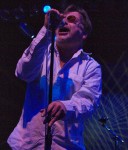 Did we feature anyone from New Jersey? We did? Now that’s a surprise. Southside Johnny and the Asbury Jukes have a new album which should be released later this year and that’s always something we look forward to here at Riot Towers. The album’s called “Soultime!” and the band has been previewing some of the songs at shows over the summer in the States; apparently they’re sounding pretty good. The one snippet we’ve heard from the live shows, “Spinning”, sounds like The Jukes at their very best with the band cooking on gas and the horns blowing up an absolute storm.
Did we feature anyone from New Jersey? We did? Now that’s a surprise. Southside Johnny and the Asbury Jukes have a new album which should be released later this year and that’s always something we look forward to here at Riot Towers. The album’s called “Soultime!” and the band has been previewing some of the songs at shows over the summer in the States; apparently they’re sounding pretty good. The one snippet we’ve heard from the live shows, “Spinning”, sounds like The Jukes at their very best with the band cooking on gas and the horns blowing up an absolute storm.
 Bob Malone’s also from New Jersey, although he lives in California these days. We reviewed the “Mojo EP”, which was a sampler for his “Mojo Deluxe” album, last year. After a year of touring the States with John Fogerty and Europe with his own band, “Mojo Deluxe” is just about ready to go and he’ll be touring the UK later this year in support of the album. If the album lives up to the standards set by the EP, it should be a little bit special. As for the live shows, you really should get along to see one of those; we’ll give you some dates later in the year.
Bob Malone’s also from New Jersey, although he lives in California these days. We reviewed the “Mojo EP”, which was a sampler for his “Mojo Deluxe” album, last year. After a year of touring the States with John Fogerty and Europe with his own band, “Mojo Deluxe” is just about ready to go and he’ll be touring the UK later this year in support of the album. If the album lives up to the standards set by the EP, it should be a little bit special. As for the live shows, you really should get along to see one of those; we’ll give you some dates later in the year.
That’s it for the bands we featured in the predictions for 2015 and so far it’s looking pretty good for all of our selections. In the third and final part of the report, we’ll bring you up to speed with some of the great bands and artists we’ve seen for the first time this year who we think you’ll be hearing a lot more of.
Please tell me it hasn’t come round again already; drunks on public transport, pubs packed with once-a-year drinkers and a demand from MusicRiot to cobble something together for their inane end of year feature. Damn, Christmas again and I hate Christmas unless I can sack a widow on Christmas Eve. But wait, I can see a chink of gloom poking through the bright lights; it looks like John Fogerty and Creedence Clearwater Revisited are opening legal hostilities again, so I think a festive five music lawsuits is about as much fun as I can hope for.
The man in the lumberjack shirt and his CCR ex-buddies are kicking legal lumps out of each other again and nobody really knows what it’s all about, but there are plenty of lawyers involved and onstage pronouncements and press conferences and a whole flamin’ media circus. Just bear this in mind guys; whoever wins, all the lawyers get paid.
But that’s not the most interesting lawsuit John Fogerty has been involved in, oh no. He sold the rights to his songs to his former label Fantasy (headed by the infamous Saul Zaentz) to escape from label (don’t try that one at home boys and girls) and go solo. So, Mr Fogerty gets a bunch of songs together and releases the album “Centerfield”. Happy ending; not quite. The litigious Mr Zaentz sues on the grounds that the album’s opening song, “The Old Man down the Road” plagiarises a Creedence song, “Run Through the Jungle”, which Zaentz holds the copyright for. He wasn’t too chuffed about the song “Zanz Kant Danz” (later changed to “Vanz Kant Danz”) either. So what could be more stupid than suing someone (unsuccessfully) for copying their own song?
Well, David Geffen had a pretty good shot at it in 1983 with Neil Young when he sued him for not sounding like his previous records. After signing one of the most contrary artists in rock (or maybe just a guy who follows his own artistic vision), he decided, after three albums he didn’t like, to sue Shakey for submitting ‘uncharacteristic’ music for release. Maybe it was a bit of a coincidence that the albums weren’t selling. You have to wonder where David Geffen had been living during the seventies if he hadn’t realised that Neil Young didn’t give a stuff about following commercial trends. They eventually kissed and made up and Shakey went back to his spiritual home at Reprise records.
So that’s one case of a label suing an artist for sounding too much like themselves and another case of a label suing an artist for not sounding like themselves. Where else can the stupidity go? Well, back in time a decade or so.
After the Beatles, the quiet one was quickly out of the blocks with the triple album “All Things Must Pass” and the single “My Sweet Lord”. Three weeks after the release of the single, George was hit with a lawsuit alleging that the single plagiarised the Chiffons single, “He’s So Fine” (big in the US, not so big in the UK). It took five years for the case to come to court and George was found guilty of “subconscious plagiarism”, which cost him over half a million dollars. What you have to ask is how come no-on spotted this similarity? “All Things Must Pass” was co-produced by Phil Spector, who was very much part of the American teen scene in 1963 when “He’s So Fine” was a hit. It’s hard to believe he couldn’t spot such an obvious similarity. So, how many more ways could lawyers invent to make money out of the music business. How about “Where there’s blame there’s a claim”?
Jumping back to the eighties again, in 1988 the parents of a teenage fan tried to accuse Ozzy Osbourne of causing the death of their son, claiming that hidden lyrics in “Suicide Solution” had caused their son to take his own life; the suit was dismissed but it didn’t mean that the suicide blame game was over. In 1990, Judas Priest were taken to court by the parents of two teenagers who, after a drugs and alcohol binge, attempted a suicide pact. It’s interesting that no-one was trying to sue any brewers, distillers or dealers for their part in the events. Just ask yourself again who benefitted from these legal cases; I’ll give you a clue, it wasn’t the parents or the bands. Ok, it’s Christmas, let’s try to end on a slightly happy note.
It all started off so well; a bunch of school friends got together and formed a band in the seventies. The band caught the New Romantic zeitgeist with their first single in 1980 and everything was looking good; who needed lawyers and contracts? Well, in this case it might have been a good idea (I never said I had to be consistent) because any memories of verbal agreements vanished after the band became famous. In 1990, Tony Hadley, Steve Norman and John Keeble sued for a share of the booty, claiming that their contributions and a verbal agreement entitled them to a twelfth of the royalties. The case was dismissed and the non-Kemp Spandaus faced huge legal bills, but that wasn’t the end of the affair.
In 2009, the guys resolved their legal issues and got back together to tour again as Spandau Ballet; well, it is Christmas and we should have a happy ending really. There’s a lesson there as well; at this time of year, everyone goes to the pub and maybe that’s what the Spandaus and all of the other people mentioned here should have done. Forget all of the lawyers, go and have a few beers and sort all of your problems out.
Merry Xmas.
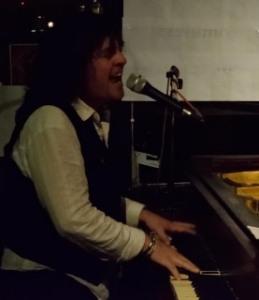 So Southend-on-Sea on a Sunday night and what’s happening? Well, the Bob Malone Band is playing at the Railway Hotel, that’s what. So you obviously want to know what’s so special about the venue and the performer, don’t you?
So Southend-on-Sea on a Sunday night and what’s happening? Well, the Bob Malone Band is playing at the Railway Hotel, that’s what. So you obviously want to know what’s so special about the venue and the performer, don’t you?
Southend has a thriving local music scene and the Railway Hotel is positioned firmly at the centre of that scene, featuring local talent and artists touring the UK. The venue isn’t a highly-polished chrome and mirrors palace; the priority here (apart from the excellent food) is live music. If you want anything else, then you’re in the wrong place. The management team excel in putting together a varied selection of live acts and providing a performance environment which is perfect for artists and audiences.
So, Bob Malone time. Bob has been working as a professional musician for around thirty years since graduating from Berklee, playing keyboards for a very impressive list of rock names while doing his own thing, touring with a small band and releasing six albums (and counting). The UK tour which ended at the Railway Hotel was in support of a UK-only EP which is a sampler for the upcoming seventh album.
The stage at the Railway is about the same size as a postage stamp, which makes for a cosy performing environment, particularly when most of the stage is occupied by a Bӧsendorfer grand piano, but the multinational band (Paul Carmichael on bass, Stefano Sanguigni on guitar and Marco Breglia on drums and backing vocals) just got on with it, although Paul Carmichael had to play most of his superb basslines with his back to the audience.
From the opening chords of “Why Not Me?”, Bob’s engaging manner between songs and his blues growl have the audience eating out of his hands, and that’s before you hear his superb piano playing, particularly on the skewed ragtime of “Chinese Algebra”. You can find any amount of versions of this on YouTube, but the live performance with a good band is something else. The set was split between material from the new “Mojo EP” (including “A Certain Distance”, “I’m Not Fine” and the audience favourite “Rage and Cigarettes”), older original material and a few high-profile covers. Bob Dylan’s “Tangled Up in Blue” is the first of the covers and the set ends with a version of The Faces classic, “Stay with Me”. It’s the end of the set and the end of the tour and the guys (particularly Bob and Stefano) are having great fun trying to be even looser live than Rod and the boys were in the 70s. I could happily listen to Bob on his own doing the New Orleans piano, voice and stomp box thing, but Paul’s fluid, funky bass, Stefano taking a few solos and Marco supplying the beat and some lovely backing vocals are the icing and the candles on the cake.
I’m only guessing here, but I suspect that Bob Malone could live quite well on the proceeds of the day job, playing live and in the studio with people like John Fogerty, and living in the bubble created by that lifestyle. Instead he chooses to do his own thing, recording his own work and taking his live band out on the road, driving a white van from town to town and playing in venues where the equipment’s held together by gaffer tape. I have the greatest admiration for anyone who chooses to step between those two worlds to pursue their own musical vision, whether it’s financially viable or not (the fee for the night at The Railway was a bucket collection from the audience). As long as some performers are true to their own vision and keep doing gigs like The Railway, we’ll all know that individualism lives on and the corporate monster hasn’t got complete control. I can’t wait for the new album now.
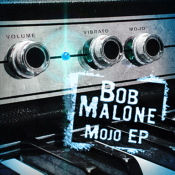 Bob Malone’s one of those musicians that you know you’ve heard about, but you’re not sure where or when; it didn’t take long to find out. Just have a look at his Wikipedia entry for a start. He played keyboards on five songs on one of my favourite albums of 2014, John Fogerty’s “Wrote a Song for Everyone”, and that’s a pretty good recommendation. He’s also a singer, songwriter and arranger who has already released six albums and “Mojo EP” is a UK-only sampler for his upcoming album “Mojo Deluxe”.
Bob Malone’s one of those musicians that you know you’ve heard about, but you’re not sure where or when; it didn’t take long to find out. Just have a look at his Wikipedia entry for a start. He played keyboards on five songs on one of my favourite albums of 2014, John Fogerty’s “Wrote a Song for Everyone”, and that’s a pretty good recommendation. He’s also a singer, songwriter and arranger who has already released six albums and “Mojo EP” is a UK-only sampler for his upcoming album “Mojo Deluxe”.
With a pedigree like that, you would expect the playing on the EP to be high quality and you won’t be disappointed. With support from Mike Baird (drums), Jeff Dean (bass) and Bob DeMarco (guitars) and a few guest appearances, the playing and arrangements are always on the money. Bob’s voice is perfectly suited to the styles and songs on the EP. He can power out the rock and blues in a raucous style, but also sounds totally convincing on the slower songs, particularly the gospel/blues cover of the Ray Charles song “Hard Times”.
The first track on the EP, the stomping “A Certain Distance”, pulls you in with an electric piano riff and pumping, mainly root-note bass to drive the song along, and it’s one of a couple of songs that explore the gap between musicians (and maybe creative artists generally) and the rest of the world. The brooding, menacing “Toxic Love” is a slow blues which builds slowly from a foundation of bass and drums by adding layers of slide, guitar and keyboards to create a swampy, bayou feel with a hint of early Creedence Clearwater Revival. “I’m Not Fine” is the second of the songs that deal lyrically with the role of the professional musician and the artificial bonhomie of the music business, and it’s boosted by some fine unison guitar and keyboard playing plus some powerful backing vocals from Lavone Seetal and Sarah Nolan.
The ballad “Paris” turns the old romantic cliché on its head as the beauties of the city are listed but can’t compare with being back home with the one you love; it’s a nice sentiment but, after rejecting one cliché, it reinforces another by introducing an accordion to create a Parisian ambience. The final track, “Rage and Cigarettes”, is a warning about the dangers of becoming embittered by allowing circumstances to take control of you, rather than the opposite, and it’s pulled along nicely by an overdriven five note slide guitar hook and a melodic bass line; this is one that you just know you want to hear live.
Bob Malone has brewed up a heady mixture of rock, blues and New Orleans soul over the years and “Mojo EP” is a perfect sampler for the upcoming “Mojo DeLuxe” album. If you want to see him live, you can find his UK tour dates for the next four weeks here. We’ll see you at the final show in Southend.
“Mojo EP” is out on 01 September 2014 on Delta Moon Records (DMR 007).


